Designing with Scandinavian pendant lights: 2025 inspiration
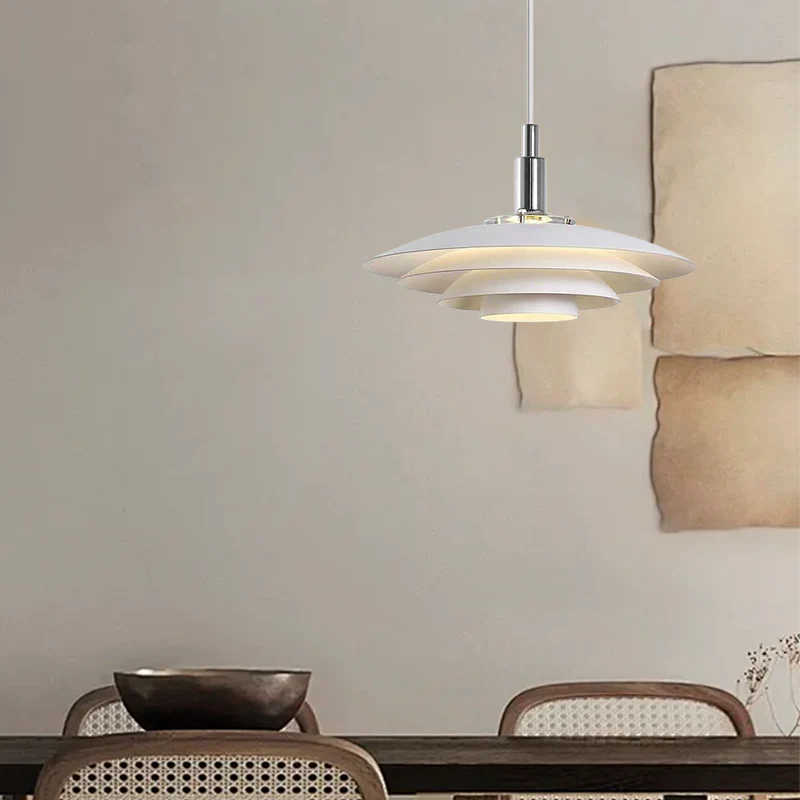
Scandinavian pendant lights are more than just lighting fixtures; they’re a celebration of simplicity and warmth. You’ll love how their clean lines and minimalist look can instantly elevate your space. In Scandinavia, where winters are long and dark, pendant lighting plays a key role in creating cosy, inviting homes. These lights don’t just illuminate—they add personality, especially in rooms with limited natural light. Whether it’s the dining room or a snug corner in the living room, a Scandinavian pendant light can transform any area into a stylish haven.
Key Takeaways
Use simple designs with straight lines to make your home peaceful and trendy.
Add wooden and metal lights for a cosy yet modern look indoors.
Try curved shapes and uneven designs to bring creativity and flow to your lighting.
Play with bright colours to make your space lively and unique.
Pick eco-friendly lights like LED bulbs and reused materials to brighten your home and help the Earth.
Key 2025 trends in Scandinavian pendant lighting
Minimalist designs with clean lines
Minimalism continues to dominate the 2025 trends in Scandinavian pendant lighting. You’ll notice how clean lines and simple forms create a sense of calm and order in your home. These designs strip away unnecessary details, leaving only the essentials. This approach not only enhances the aesthetic appeal but also ensures functionality.
Imagine a pendant with a sleek, geometric shape hanging over your dining table. It doesn’t just light up the space; it becomes a statement piece. Minimalist designs are perfect for those who love a clutter-free environment. They work well in both small apartments and larger homes, blending seamlessly with various interior styles.
If you’re looking to embrace this trend, focus on neutral colours like white, grey, or black. These shades complement the minimalist aesthetic and make your pendant lighting stand out without overwhelming the room.
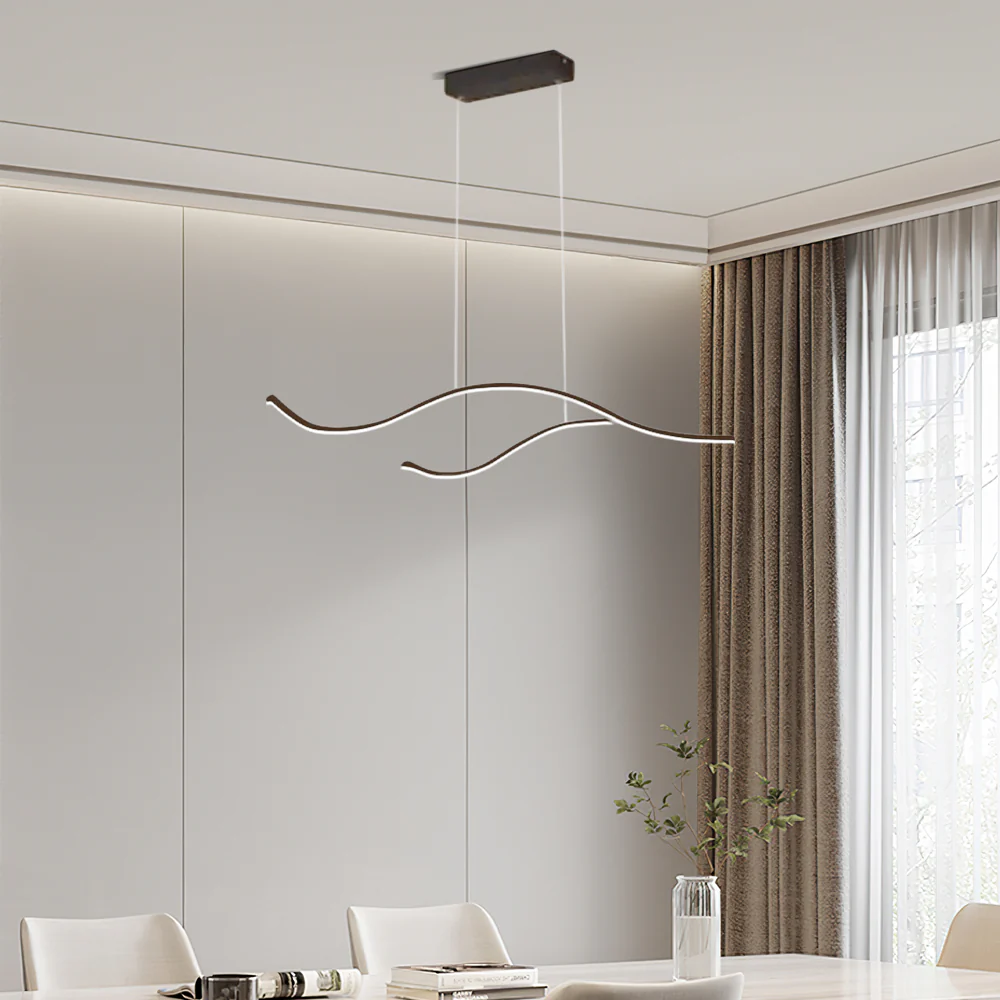
Scandinavian-inspired wood and metal fixtures
Scandinavian-inspired wood and metal fixtures are making waves in 2025. These materials bring a natural and modern touch to your interiors. Wood adds warmth and texture, while metal offers durability and a sleek finish. Together, they create a harmonious balance that’s hard to resist.
Young Finnish and German consumers are increasingly drawn to recycled and inherited furniture. This aligns with the eco-conscious ideals of Scandinavian design.
Swedish men often prioritise practical design elements that reflect their identity and home.
Wood-look ceilings are also gaining popularity. They enhance biophilic design by connecting you with nature while improving building performance. Combining the warmth of wood with the strength of metal makes these fixtures a practical choice for modern interiors.
When choosing Scandinavian-inspired wood and metal fixtures, consider their versatility. They work beautifully in kitchens, dining rooms, and even bedrooms. Whether it’s a pendant with a wooden frame or a metal shade, these fixtures add character to any space.
Organic shapes and asymmetrical forms
Organic shapes and asymmetrical forms are redefining pendant lighting in 2025. These designs move away from rigid lines and embrace fluid, natural forms. Think of pendants with curving lines, soft edges, and unique silhouettes. They bring a sense of movement and life to your interiors.
Lighting fixtures with organic shapes are becoming increasingly popular.
Their calming effect makes them ideal for creating a relaxing atmosphere.
These designs enhance natural elements in your home, making the space feel more inviting.
Picture a pendant with an asymmetrical form hanging in your living room. It doesn’t just provide light; it becomes a piece of art. These unique modern designs are perfect for those who want to make a bold statement. They pair well with other Scandinavian elements, like wooden furniture and neutral colour palettes.
If you’re ready to explore this trend, look for pendants that mimic shapes found in nature. Whether it’s a fixture inspired by a flowing river or a blooming flower, these designs add a touch of elegance and creativity to your home.
Colour drenching and bold hues
If you think Scandinavian lighting is all about muted tones, think again. In 2025, colour drenching is taking centre stage, bringing bold hues into the spotlight. This trend involves using a single, vibrant colour across multiple elements in a room, including pendant lights. It’s a daring yet cohesive way to add personality to your space.
Imagine a deep emerald green pendant light hanging over your dining table, paired with matching chairs and curtains. The result? A striking, unified look that feels both modern and sophisticated. Colour drenching works beautifully with Scandinavian design principles, as it allows you to maintain simplicity while introducing a pop of energy.
Bold hues like mustard yellow, cobalt blue, and terracotta are particularly popular this year. These colours not only make a statement but also create a warm and inviting atmosphere. You can use them to highlight specific areas, like the kitchen island or a reading nook, making these spaces feel more intentional.
Tip: When experimenting with bold colours, balance is key. Pair vibrant pendant lights with neutral walls and furniture to avoid overwhelming the room. This approach keeps the focus on the lighting while maintaining a harmonious overall style.
Sustainable and eco-friendly lighting solutions
Sustainability isn’t just a buzzword—it’s a lifestyle choice that’s shaping the future of Scandinavian lighting. In 2025, sustainable lighting solutions are more accessible and stylish than ever. From energy-efficient LED technology to recycled materials, these options let you illuminate your home while caring for the planet.
Why is this trend gaining momentum? For one, sustainability awareness is growing. People are looking for ways to reduce their carbon footprint without compromising on design. Governments are also offering incentives for adopting eco-friendly practices, making it easier for you to make the switch.
The Lamps & Lighting market in Sweden is projected to reach $1.09 billion by 2025.
An annual growth rate of 5.69% is expected from 2025 to 2029.
Customers are increasingly drawn to energy-efficient and sustainable lighting options.
Energy-efficient LED technology is a standout feature in this trend. These lights consume significantly less energy than traditional bulbs, saving you money on electricity bills. They also last longer, reducing waste and the need for frequent replacements. Whether you’re updating your ceiling lighting trends or adding a new pendant, LEDs are a smart choice.
Recycled and natural materials are also making waves. Think pendants crafted from reclaimed wood or fixtures made from recycled metal. These designs not only look stunning but also align with the eco-conscious ethos of Scandinavian style. By choosing sustainable options, you’re investing in lighting that’s as kind to the environment as it is to your home.
Note: When shopping for sustainable lighting, look for certifications like Energy Star or labels indicating the use of recycled materials. These details ensure you’re getting a product that meets high environmental standards.
Incorporating Scandinavian pendant lights into your home
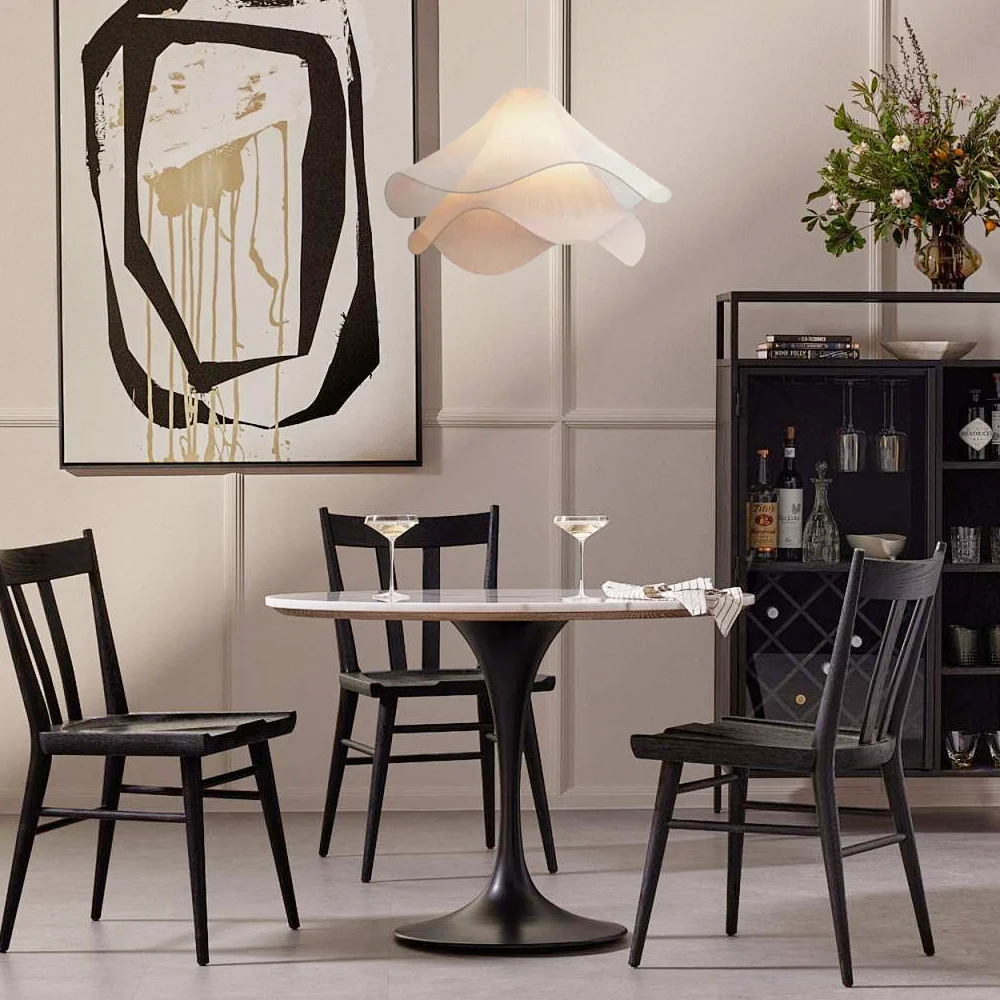
Living room: Creating a cosy and inviting atmosphere
Your living room is the heart of your home, and the right lighting can make it feel warm and inviting. Scandinavian pendant lights excel at creating atmosphere, blending functionality with aesthetic appeal. Their soft, diffused glow transforms your space into a haven of comfort.
Lighting plays a crucial role in setting the mood and enhancing well-being.
Scandinavian pendant lights are designed to create ambiance and promote joy.
Their clean, modern designs complement various interior styles.
Imagine a pendant with a natural wood finish hanging from your ceiling. It adds warmth while maintaining a minimalist look. You could also opt for fixtures with organic shapes to introduce a touch of creativity. Position your pendant lighting near seating areas or above a coffee table to draw attention and create a focal point.
Tip: Use dimmable pendants to adjust the brightness based on the time of day or your mood. This flexibility ensures your living room always feels just right.
Dining room: Enhancing the dining experience with focal lighting
The dining room is where you gather with loved ones, and pendant lighting can elevate these moments. A well-placed Scandinavian pendant light not only illuminates your table but also sets the tone for memorable meals.
Choose a pendant that complements your dining table's size and shape. A single large fixture works well for round tables, while a row of smaller pendants suits rectangular ones. Bold colours like terracotta or mustard yellow can add personality, while neutral tones keep things understated.
Did you know? Lighting significantly influences how food appears. Warm-toned pendants enhance the colours of your dishes, making meals look more appetising.
Position your pendant at the right height—low enough to create intimacy but high enough to avoid obstructing views. This balance ensures your dining room feels both functional and stylish.
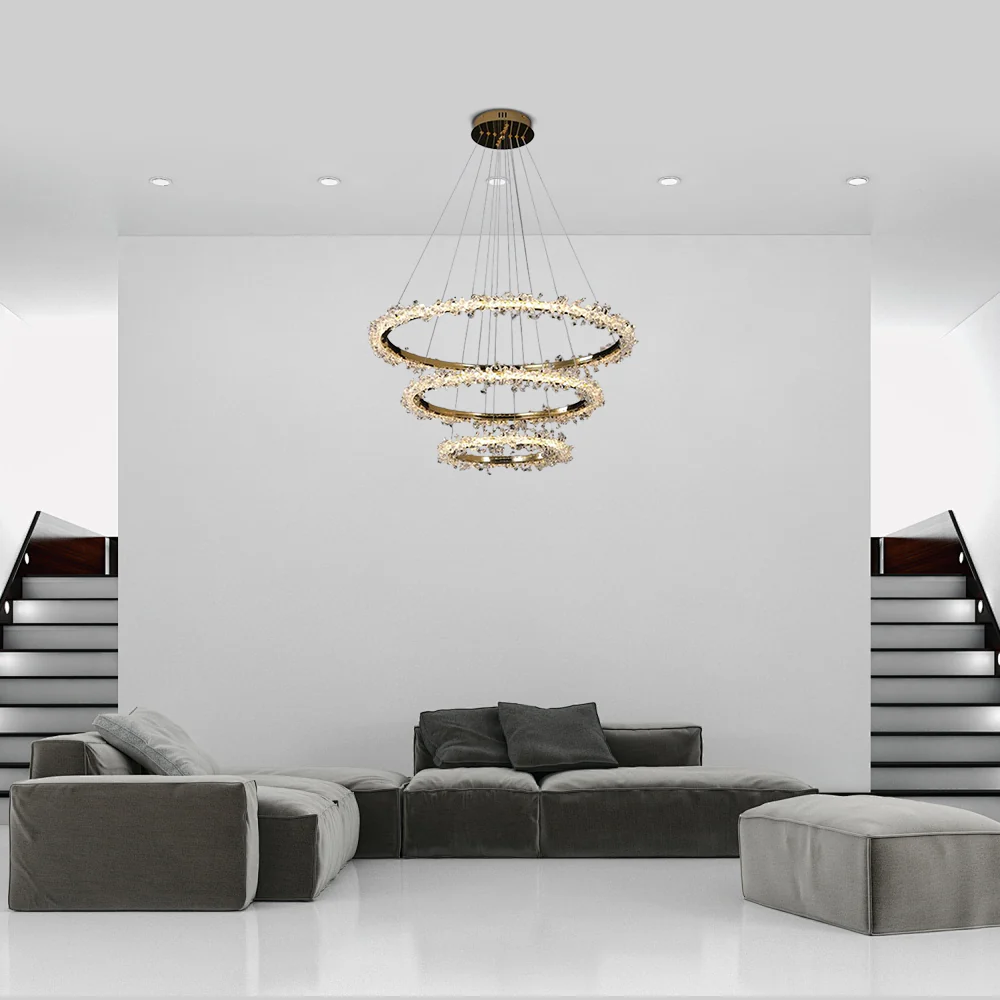
Kitchen: Balancing functionality and style
In the kitchen, pendant lighting must strike a balance between practicality and design. You need fixtures that provide ample light for tasks while enhancing the room's aesthetic. Scandinavian pendants excel in this regard, offering a blend of form and function.
Choose pendants that match your kitchen's scale and proportions.
Experiment with different heights and arrangements for visual interest.
Mix and match styles to create a personalised look.
Functionality |
Style Appeal |
|
|---|---|---|
Task Lighting |
Provides focused illumination for cooking and prep work |
Enhances the kitchen's aesthetic with stylish fixtures |
Ambient Lighting |
Creates a warm and inviting atmosphere |
Sets the overall mood and complements decor |
Accent Lighting |
Highlights specific features or decor |
Adds visual interest and depth to the space |
For a modern kitchen, consider pendants with metal finishes or geometric shapes. If you prefer a natural touch, opt for wooden fixtures. Position them above your island or countertops to ensure optimal lighting for cooking and socialising.
Pro Tip: Use LED bulbs in your pendants for energy efficiency and long-lasting performance. They’re eco-friendly and align with Scandinavian design principles.
Bedroom: Adding warmth and serenity
Your bedroom is your sanctuary, a place to unwind and recharge. Scandinavian pendant lights can help you create a serene and cosy atmosphere. Their soft, diffused glow adds warmth, making your bedroom feel like a retreat.
When choosing a pendant for your bedroom, focus on fixtures with organic shapes or natural materials like wood. These designs bring a sense of calm and harmony to the space. A pendant with a fabric shade or a wooden frame can soften the room’s look while adding a touch of modern elegance.
Placement matters: Hang your pendant above the bedside table or in the centre of the room for balanced lighting.
Layer your lighting: Combine your pendant with bedside lamps or wall sconces for a versatile setup.
Tip: Use dimmable bulbs to adjust the brightness according to your mood. A lower setting creates a relaxing vibe, perfect for winding down after a long day.
Scandinavian pendant lights also work well in smaller bedrooms. Their minimalist style doesn’t overwhelm the space, and their clean lines keep the room looking uncluttered. Whether you prefer a single statement piece or a cluster of smaller pendants, these lights can transform your bedroom into a haven of tranquillity.
Entryway: Making a lasting first impression
Your entryway sets the tone for your home. It’s the first thing guests see, so why not make it memorable? Scandinavian pendant lighting can turn this often-overlooked space into a welcoming focal point.
Lighting is often described as the "red carpet" of interior design. A well-chosen pendant in your entryway can create a warm and inviting atmosphere. It’s not just about illumination; it’s about making a statement.
A bold pendant with a geometric design can add a modern touch.
Fixtures with natural materials like wood or metal bring warmth and texture.
Organic shapes can soften the space, making it feel more inviting.
Did you know? Studies show that lighting significantly influences first impressions. In hospitality settings, it’s often the key to creating a welcoming ambiance. The same principle applies to your home.
Hang your pendant at the right height to ensure it doesn’t obstruct views but still draws attention. Pair it with a mirror or artwork to enhance the overall aesthetic. A well-lit entryway not only impresses guests but also makes coming home feel special.
Practical tips for selecting Scandinavian pendant lights
Choosing the right size for your space
When it comes to pendant lighting, size matters. A pendant that's too large can overwhelm a small room, while one that's too small might get lost in a larger space. So, how do you choose the perfect pendant light for your room? Start by measuring the dimensions of your space. This will help you find a pendant that complements the scale of the room or the furniture beneath it.
For example, in a dining room, the pendant should be proportional to the table. A good rule of thumb is to ensure the pendant's width is about one-third to one-half the width of the table. In smaller spaces, opt for compact designs that don’t crowd the room. For larger areas, consider multiple pendants or a statement fixture to fill the space effectively.
Tip: If you’re hanging a pendant above a table or kitchen island, keep the suspension height between 75-90cm above the surface. This ensures adequate illumination without obstructing views.
Selecting materials that complement your interior
The material of your pendant light plays a significant role in tying your room together. Scandinavian pendant lights often feature natural materials like wood, metal, or fabric. These materials not only enhance the aesthetic but also contribute to the overall mood of the space.
Wooden pendants add warmth and a touch of nature, making them ideal for cosy living rooms or bedrooms. Metal fixtures, on the other hand, bring a sleek, modern vibe that works well in kitchens or dining areas. Fabric shades soften the light, creating a calming atmosphere perfect for bedrooms or reading nooks.
Studies have shown that improved lighting levels can reduce stress and enhance visual comfort. By choosing materials that align with your interior design, you can create a space that feels both functional and harmonious. For instance, pairing wooden pendants with neutral tones can amplify the Scandinavian aesthetic, while metal fixtures can add a contemporary edge to your home.
Note: When selecting materials, think about durability and maintenance. Metal fixtures are easy to clean, while fabric shades may require more care to keep them looking fresh.
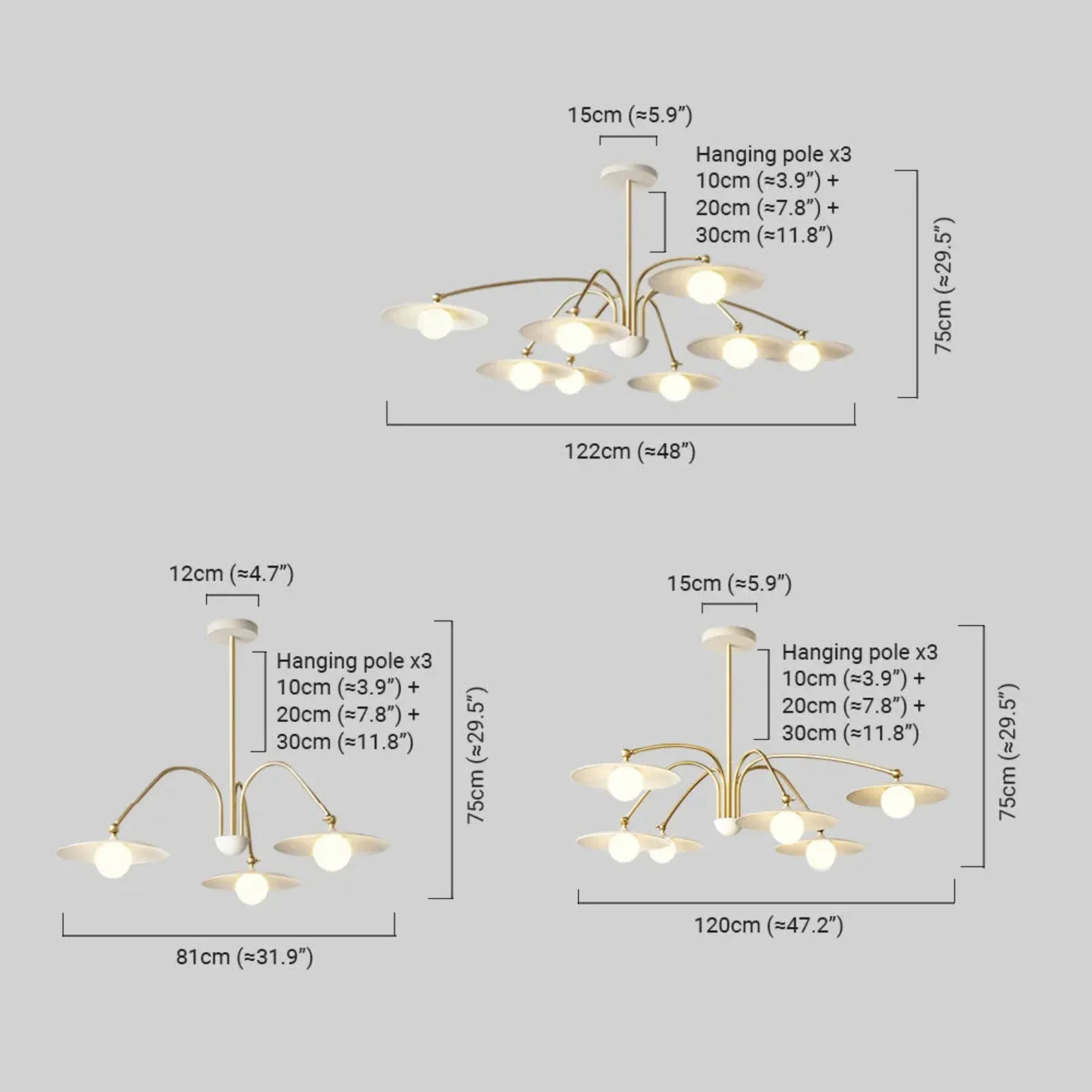
Considering the purpose and lighting needs of the room
Every room in your home serves a unique purpose, and the lighting should reflect that. The right pendant can create a cosy, productive, or lively atmosphere, depending on the room's function.
In a dining room, pendants should provide focused light to enhance the dining experience. Choose fixtures that complement the table’s size and shape. For a rectangular table, a row of pendants works beautifully, while a single statement piece suits a round table. In the kitchen, task lighting is key. Pendants above the island or countertops should offer bright, focused light for cooking and prep work.
For bedrooms, softer lighting creates a serene and relaxing environment. Organic shapes and natural materials work well here, adding warmth and tranquillity. In smaller spaces, avoid oversized fixtures. Instead, opt for minimalist designs that don’t overwhelm the room.
Pro Tip: Layer lighting for the perfect ambiance. Combine your pendant with other lighting sources like wall sconces or floor lamps to create a versatile and inviting space.
By aligning your pendant lighting with the room’s purpose, you can enhance both functionality and style. Whether you’re aiming for a cosy living room or a vibrant kitchen, the right pendant light can make all the difference.
Mixing and matching pendant lighting styles
Mixing and matching pendant lighting styles is a brilliant way to add character to your home. It allows you to create a unique look that reflects your personality while maintaining the balance and harmony Scandinavian design is known for. But how do you pull it off without making your space feel chaotic?
Start by choosing a unifying element. This could be a shared material, colour, or shape. For example, you might pair a wooden pendant with a metal one, as long as they share a similar tone or finish. This creates a cohesive look while still offering variety.
Another approach is to play with scale. Combine a large statement pendant with smaller, subtler ones to create visual interest. This works particularly well in open-plan spaces, where you want to define different areas without using walls.
Tip: Stick to a maximum of three styles to avoid overwhelming the room. Too many different designs can make the space feel cluttered.
You can also experiment with placement. Try grouping pendants at varying heights for a dynamic, layered effect. This technique works beautifully over dining tables or kitchen islands, where you want to draw attention to a specific area.
When mixing styles, remember that lighting is not just functional—it’s an art form. By thoughtfully combining different pendant designs, you can create a space that feels both stylish and personal.
Ensuring proper installation and height adjustment
Proper installation and height adjustment are crucial for getting the most out of your pendant lighting. A poorly installed pendant can throw off the balance of a room or fail to provide adequate light. So, how do you get it right?
First, consider the height. For pendants above a countertop or dining table, aim to hang them between 30 to 36 inches from the surface. This ensures the light is close enough to illuminate the area but not so low that it obstructs views or feels intrusive.
If you’re working with a kitchen that has standard 8-foot ceilings, this height range works perfectly. For higher ceilings, adjust the pendant’s height proportionally to maintain balance. Always measure from the bottom of the pendant to the surface below for accuracy.
Spacing is another key factor. If you’re installing multiple pendants, keep them 24 to 30 inches apart. This ensures even light distribution and prevents the fixtures from looking cramped.
Note: Always double-check your measurements before drilling or installing. A small mistake can lead to uneven lighting or awkward placement.
Finally, think about the type of ceiling you have. For sloped ceilings, you might need adjustable fixtures or specialised mounts to ensure the pendants hang straight. This small detail can make a big difference in the overall look and functionality of your lighting.
By paying attention to these details, you can ensure your pendant lighting not only looks stunning but also serves its purpose effectively. Proper installation and height adjustment are the finishing touches that bring your lighting design to life.
Scandinavian pendant lighting in 2025 blends aesthetics with practicality like never before. These pendants aren’t just functional; they’re bold statements that enhance your home’s character. Minimalist designs, natural materials like wood and rattan, and oversized formats dominate the trends. They add warmth and align with sustainable living preferences. Smart technology also plays a role, making lighting both stylish and efficient. Whether you’re exploring ceiling lighting trends or updating your space, Scandinavian pendant lights offer a perfect mix of beauty and purpose. Thoughtful choices can transform your home into a harmonious retreat.
FAQ
How do I choose the right Scandinavian pendant light for my room?
Start by measuring your space. Look for pendants that match the room’s scale and purpose. For dining tables, pick a pendant that’s one-third to one-half the table’s width. Smaller rooms benefit from compact designs, while larger spaces can handle bold statement pieces.
Can Scandinavian pendant lights work in small spaces?
Absolutely! Their minimalist designs fit perfectly in small rooms. Choose pendants with clean lines and neutral colours to avoid clutter. Compact fixtures or single pendants work best. They add style without overwhelming the space, creating a cosy and functional environment.
Are Scandinavian pendant lights energy-efficient?
Yes, many Scandinavian pendants use LED bulbs, which consume less energy and last longer. Look for fixtures with eco-friendly certifications like Energy Star. These lights save money on electricity bills and align with sustainable living practices.
What materials are popular in Scandinavian pendant lights?
Wood, metal, and fabric are common choices. Wood adds warmth, metal offers a sleek look, and fabric softens the light. These materials complement Scandinavian design principles and suit various interiors. Pair them with neutral tones for a harmonious aesthetic.
How high should I hang my pendant light?
For dining tables or kitchen islands, hang pendants 75-90cm above the surface. This height provides enough light without obstructing views. For higher ceilings, adjust proportionally. Always measure carefully to ensure proper placement and balance.

